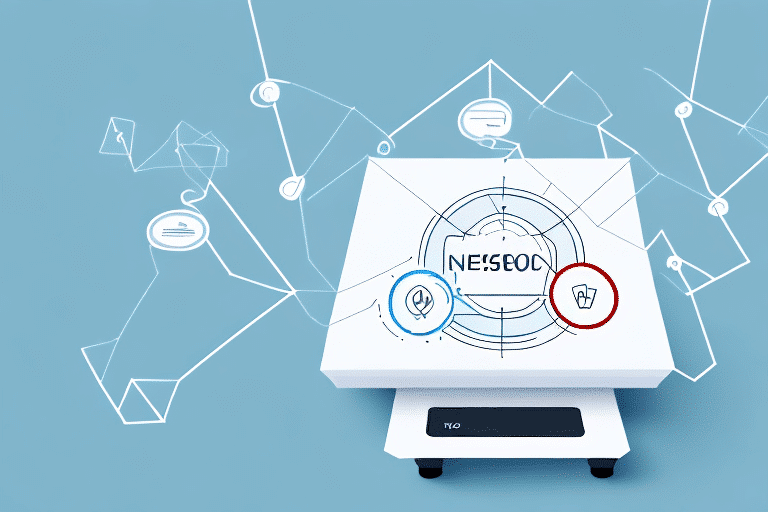Understanding the Importance of UDS in Package Scales
In the dynamic realm of packaging and logistics, precise weight measurements are paramount. Accurate package weights directly influence shipping costs, inventory management, and customer satisfaction. Ultrasonic Distance Sensor (UDS) systems have emerged as a reliable solution, offering enhanced accuracy and efficiency in weight determination. Unlike traditional manual scales, UDS systems minimize human error by automatically detecting package dimensions and calculating weight in real-time.
According to a U.S. Department of Transportation report, automation in weight measurement can reduce errors by up to 30%, highlighting the critical role of technologies like UDS in modern logistics.
Setting Up UDS for Package Scales
Choosing the Right Location
Proper installation of a UDS system begins with selecting an optimal location within the packaging facility. The area should be free from obstructions, excessive vibrations, and noise to ensure accurate sensor readings.
System Compatibility and Calibration
Ensure that the UDS system is compatible with your existing package scales. Calibration is essential and involves inputting accurate package dimensions and weight capacities. Adhering to the manufacturer's calibration instructions is crucial for maintaining measurement accuracy.
Maintenance and Upkeep
Regular maintenance, including cleaning sensors and inspecting cables, helps prevent malfunctions. Establishing a backup system is also recommended to mitigate potential downtime and technical issues.
Optimizing UDS for Accurate Weight Measurements
Minimizing Environmental Interference
Environmental factors such as temperature fluctuations and vibrations can affect UDS accuracy. Implementing measures to shield the system from these variables is vital for reliable performance.
Investing in Advanced Technologies
Opt for UDS systems equipped with features like noise reduction and temperature compensation. These technologies enhance measurement precision and reduce errors significantly.
Proper Usage Practices
Ensure correct placement of packages on the scale and avoid disturbances during the weighing process. Using the system in controlled environments with minimal foot traffic further optimizes accuracy.
The Benefits of Using UDS in the Packaging Industry
Enhanced Accuracy and Efficiency
UDS systems provide highly accurate weight measurements, reducing financial losses caused by shipping inaccuracies. Automation streamlines the packaging process, saving time and labor costs.
Integration with Other Systems
UDS can seamlessly integrate with barcode scanners, label printers, and inventory management systems, creating a cohesive and efficient workflow. This integration minimizes errors and boosts overall productivity.
Customization and Versatility
UDS systems can be tailored to handle various package sizes, weights, and materials, making them adaptable to diverse packaging needs.
Challenges and Solutions in Managing UDS Systems
Calibration and Maintenance Issues
Regular calibration is necessary to maintain accuracy. Implementing a systematic maintenance schedule can mitigate calibration drift and extend system lifespan.
Technical Complexity and Training
UDS systems may require specialized knowledge for operation and troubleshooting. Providing comprehensive training for staff ensures effective system utilization and reduces the risk of errors.
Cost Considerations
Initial installation and ongoing maintenance costs can be significant. Conducting a cost-benefit analysis helps determine the long-term savings and efficiency gains from UDS implementation.
Selecting the Right UDS System for Your Needs
Key Features to Consider
When choosing a UDS system, consider compatibility with existing scales, accuracy levels, ease of installation, and maintenance requirements. Advanced features like noise reduction and temperature compensation enhance performance.
Connectivity and Integration
Ensure the UDS system supports robust connectivity options for seamless integration with your facility’s network infrastructure. This facilitates efficient data transfer and real-time monitoring.
Durability and Environmental Resistance
Select systems with durable construction and protective features such as shock absorbers or waterproofing, especially if used in harsh environments like warehouses or shipping docks.
Future Trends in UDS Technology and Its Impact on Package Scales
The evolution of UDS technology is set to revolutionize package management further. Future advancements may include enhanced sensor accuracy, machine learning algorithms for predictive maintenance, and greater integration with Internet of Things (IoT) devices. These developments promise increased efficiency, reduced operational costs, and improved scalability for packaging facilities.
According to a McKinsey & Company report, the integration of advanced sensing technologies is expected to drive significant productivity gains in the logistics sector over the next decade.
Best Practices for Managing UDS Systems to Ensure Consistency
Regular Maintenance and Calibration
Implement a routine maintenance and calibration schedule to sustain system accuracy and reliability. Keeping sensors clean and ensuring proper calibration prevents measurement discrepancies.
Training and Standard Operating Procedures
Equip staff with the necessary training to operate and troubleshoot UDS systems effectively. Developing clear standard operating procedures (SOPs) aids in consistent system usage and problem resolution.
Monitoring and Record-Keeping
Maintain detailed records of weight measurements, calibration activities, and maintenance tasks. Analyzing these records helps identify trends, predict potential issues, and make informed decisions for system improvements.
Troubleshooting Common Issues with UDS on Package Scales
Inaccurate Weight Measurements
Ensure the scale is on a level surface and that the load cell is free from debris. Avoid overloading the scale and ensure even weight distribution across the platform.
Calibration Problems
Follow the manufacturer's calibration instructions meticulously. Use appropriate calibration weights and ensure the scale is zeroed correctly before calibration. If issues persist, consult technical support.
Connectivity Issues
Check all connections and ensure that the system is properly integrated with your network infrastructure. Restarting the system or updating firmware may resolve connectivity problems.
Real-World Applications of UDS in the Packaging Industry
UDS systems are extensively utilized across various sectors within the packaging industry, including transportation, logistics, and inventory management. For example, in e-commerce fulfillment centers, UDS enables rapid and accurate package weighing, facilitating efficient order processing and shipping.
In logistics hubs, UDS aids in optimizing load distribution and transportation planning, ensuring that shipments are balanced and cost-effective. Inventory management systems benefit from UDS by maintaining precise stock levels and reducing discrepancies.
Conclusion
Ultrasonic Distance Sensor (UDS) systems offer significant advantages for package scales, including enhanced accuracy, efficiency, and integration capabilities. Proper setup, optimization, and management are essential to harness these benefits fully. By selecting the right UDS system and adhering to best practices, packaging facilities can achieve streamlined operations, cost savings, and improved customer satisfaction. As UDS technology continues to advance, its role in the packaging industry is poised to become even more pivotal, driving innovation and efficiency in logistics and supply chain management.








